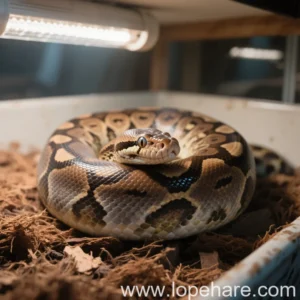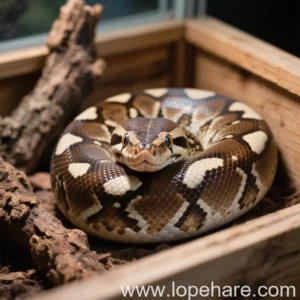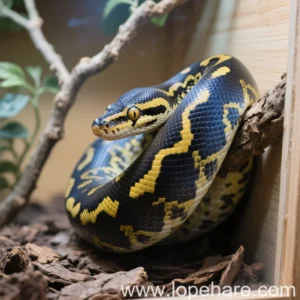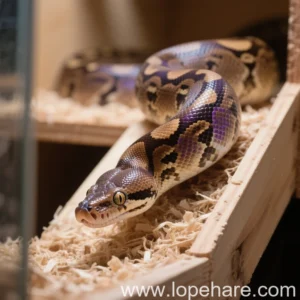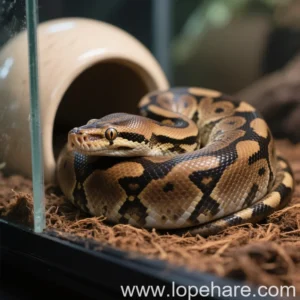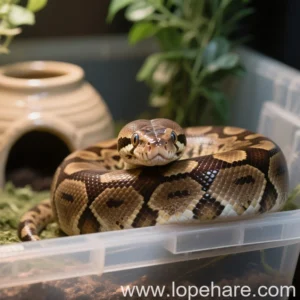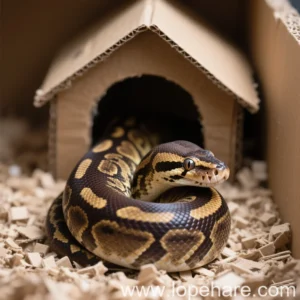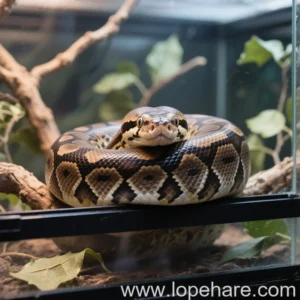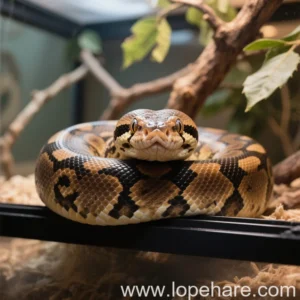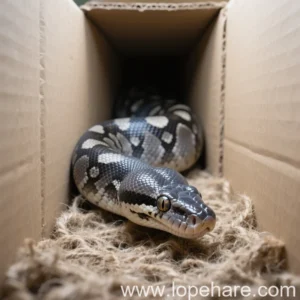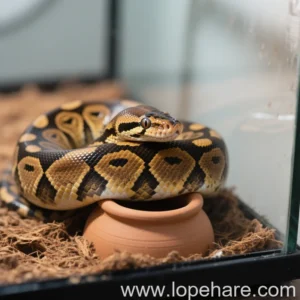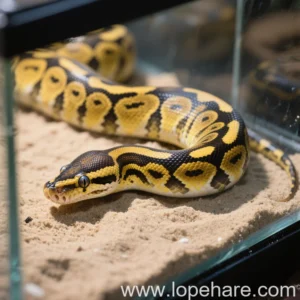Reptile Husbandry
Ball Python Lighting: Do They Need UVB? Expert Recommendations for Healthy Growth
At lopehare, our mission is to provide comprehensive, professional care information for niche pets, including reptiles. One topic that generates frequent discussion among ball python owners and enthusiasts is the necessity of UVB lighting. Historically, it was common practice to house ball pythons without any specialized UVB light, given their primarily nocturnal or crepuscular (active during dawn and dusk) nature and tendency to hide.
However, as our understanding of reptile physiology and natural behavior in the wild grows, the consensus among many experienced keepers and herpetological veterinarians is shifting. While they might survive without it, providing appropriate UVB lighting offers significant benefits that contribute to their overall health, well-being, and potential for healthy growth throughout their lifespan.
Introduction: The UVB Question
Unlike diurnal (day active) reptiles such as bearded dragons or many lizard species, which bask extensively in direct sunlight to obtain UVB for Vitamin D3 synthesis, ball pythons (Python regius) spend much of their day hidden away in burrows, hollow logs, or dense vegetation in their native West and Central Africa. This natural history led to the long-held belief that UVB wasn’t necessary in captivity.
The primary function of UVB radiation for reptiles is to allow their skin to synthesize Vitamin D3 (cholecalciferol). Vitamin D3 is crucial for the absorption of calcium from the diet into the bloodstream. Without sufficient D3 and calcium, reptiles can develop Metabolic Bone Disease (MBD), a potentially fatal condition that weakens bones and causes deformities. While MBD is less common in snakes than in lizards due to different calcium metabolism pathways and feeding habits (snakes eat whole prey, including bones, providing dietary calcium), it is not impossible, particularly if diet or supplementation is inadequate.
Historical View vs. Modern Science
The traditional approach was based on the observation of ball pythons hiding during the day. Since they weren’t seen actively basking, the conclusion was that they didn’t need UVB. Care focused on providing heat, humidity, and hides.
Modern herpetology, however, recognizes that even animals with nocturnal or crepuscular tendencies can benefit from exposure to low levels of UVB. Research suggests that many species, including some snakes, may emerge at dawn or dusk or position themselves in filtered sunlight to obtain small amounts of UVB. Furthermore, UVB provides benefits beyond just Vitamin D3 synthesis:
- Circadian Rhythms: A natural light cycle, including UVB, helps regulate a snake’s internal clock, influencing activity patterns, feeding responses, and breeding cycles.
- Immune Function: Studies in various animals, including some reptiles, indicate that appropriate UVB exposure can positively impact the immune system.
- Behavioral Enrichment: Providing lighting that mimics the natural environment allows snakes to express more natural behaviors, potentially reducing stress.
Expert Consensus: Many leading reptile veterinarians and researchers now recommend providing appropriate, low-level UVB for ball pythons as part of best practice husbandry, viewing it as a way to optimize their health rather than just prevent deficiency.
Why UVB Matters for Ball Pythons
Even if your ball python gets calcium from prey bones and supplemental dusting, providing UVB offers a more natural and potentially more efficient pathway for Vitamin D3 metabolism. This is especially true for captive animals whose diets and environments may not perfectly replicate wild conditions.
Consider the following potential benefits:
- Improved Calcium Utilization: UVB facilitates the natural synthesis of Vitamin D3, which aids in calcium absorption. While dietary D3 exists (especially if feeding prey fed UVB or gut-loaded with D3), endogenously synthesized D3 is often considered more physiologically relevant.
- Enhanced Well-being: A naturalistic light cycle with UVB contributes to a more natural environment, which can reduce stress and promote overall health. Stress is a significant factor in reptile health decline.
- Support for Various Physiological Processes: Vitamin D receptors are found throughout a reptile’s body, suggesting roles beyond just calcium metabolism, potentially involving immune response and cell growth regulation.
Choosing the Right UVB
This is where precision is key. Ball pythons do *not* need the high levels of UVB required by a desert lizard. Too much UVB can be harmful, causing eye damage or skin burns.
Based on the latest recommendations, look for:
- Strength: A low-level UVB bulb, typically 5% or 6% output (often labeled as 5.0 or 6%). Some experts suggest slightly higher (e.g., 7%) in certain setups, but lower is generally safer if in doubt. Avoid bulbs designed for high-UVB basking species.
- Type: Linear fluorescent tube bulbs (T5 HO is generally preferred over T8 due to better output and lifespan) are recommended over coil/compact fluorescent bulbs, which can have inconsistent output and have been linked to eye problems in some reptiles.
- Brand Reputation: Choose reputable brands known for consistent UVB output and quality (e.g., Arcadia, Zoo Med ReptiSun).
- Replacement: Remember that UVB output degrades over time. Bulbs need to be replaced regularly, typically every 6 to 12 months, even if they are still emitting visible light. Note down the installation date!
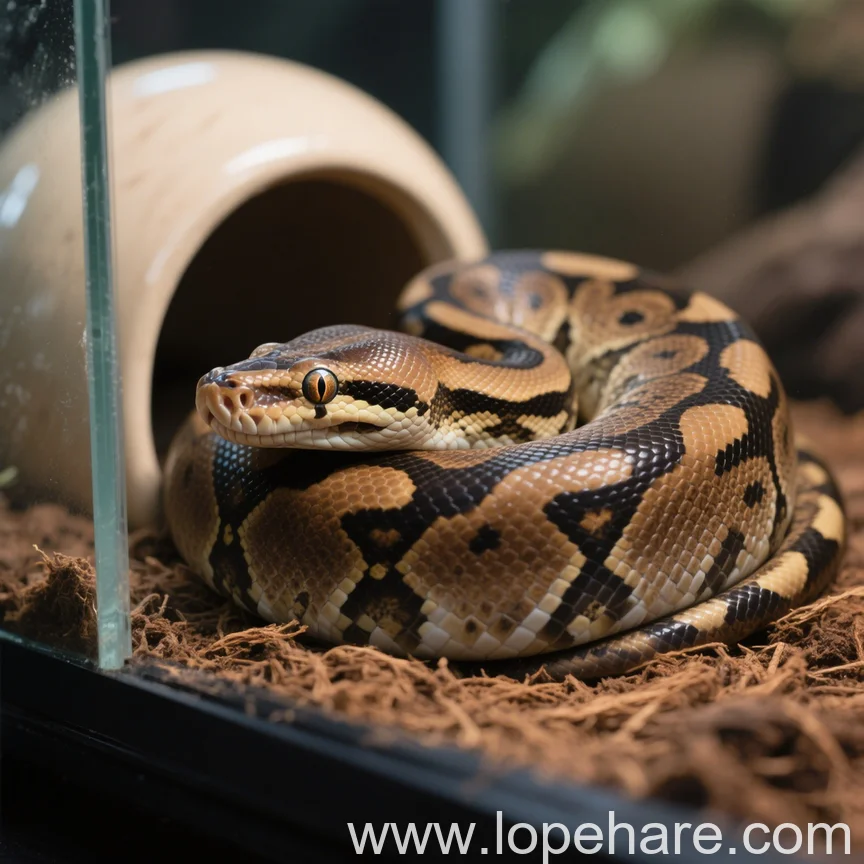
Placement and Safety
Proper placement is crucial to provide a beneficial UV gradient and prevent harm.
- Overlap with Heat: Place the UVB fixture so it overlaps with the warm side and basking spot area. This allows the snake to absorb UVB while thermoregulating.
- Distance: The effective distance of UVB depends on the bulb strength, fixture (especially if it has a reflector), and any mesh or glass between the bulb and the snake. Mesh screens can block up to 50% of UVB. Check manufacturer recommendations and consider using a UV Index (UVI) meter if possible to ensure the UVI at the snake’s closest basking spot is within the recommended range for ball pythons (often cited as UVI 0.5-1.5, with a maximum of UVI 2.0 briefly).
- Provide Shade: Crucially, ensure there are plenty of hides and shaded areas in the enclosure where the snake can completely escape the UVB light if it chooses. Ball pythons are crepuscular and need areas to hide from light.
- No Obstructions: Do not place glass or most plastics between the UVB bulb and the snake, as these materials block UVB rays.
Risk of Overexposure: Using too strong a bulb or placing it too close without adequate shade can cause significant harm, including eye damage (photokeratoconjunctivitis) and thermal burns if placed near a heat source.
UVB vs. Supplementation
Does providing UVB mean you can stop calcium and vitamin dusting? Not necessarily. Dietary calcium and phosphorus balance are still vital, especially when feeding non-whole prey items (though whole prey is recommended). Many keepers providing UVB still use a pure calcium supplement (without D3) on some prey items and a multivitamin supplement (with preformed Vitamin D3) less frequently, as recommended by their veterinarian. The UVB helps the snake *utilize* the calcium effectively by providing a natural source of D3 synthesis, complementing dietary sources.
Conclusion: Recommended for Optimal Health
While ball pythons have been kept for years without UVB, the current understanding of their natural history and physiology strongly suggests that providing appropriate, low-level UVB lighting is beneficial for their long-term health and well-being. It supports essential biological processes like Vitamin D3 synthesis and calcium metabolism, aids in regulating natural cycles, and offers behavioral enrichment.

At lopehare, we advocate for husbandry practices that aim for optimal health rather than just survival. Investing in a quality low-level UVB setup, understanding proper placement, and adhering to a bulb replacement schedule are steps that contribute significantly to a thriving ball python. Always consult with a reptile veterinarian for advice tailored to your specific animal.
References:
- Vitamin D – Wikipedia
- UV Index – Wikipedia
- Various articles and recommendations from leading reptile veterinarians and herpetologists (general knowledge consensus).
